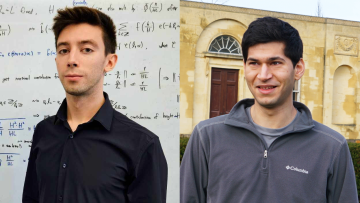Unlikely Double Intersections in a power of a modular curve (Part 2)
Abstract
The Zilber-Pink Conjecture, which should rule the behaviour of intersections between an algebraic variety and a countable family of "special varieties", does not take into account double intersections; some results related to tangencies with special subvarieties have been obtained by Marché-Maurin in 2014 in the case of powers of the multiplicative group and by Corvaja-Demeio-Masser-Zannier in 2019 in the case of elliptic schemes. We prove that any algebraic curve contained in Y(1)^2 is tangent to finitely many modular curves, which are the one-codimensional special subvarieties. The proof uses the Pila-Zannier strategy: the Pila-Wilkie counting theorem is combined with a degree bound coming from a Weakly Bounded Height estimate. The seminar will be divided into two talks: in the first one, we will explain the general Zilber-Pink Conjecture philosophy, we will describe the main tools used in this context and we will see what the differences in the double intersection case are; in the second one, we will focus on the proofs and we will see how o-minimality plays a main role here. In the case of a curve in Y(1)^2, o-minimality is also used for height estimates (which are then ineffective, which is usually not the case).


